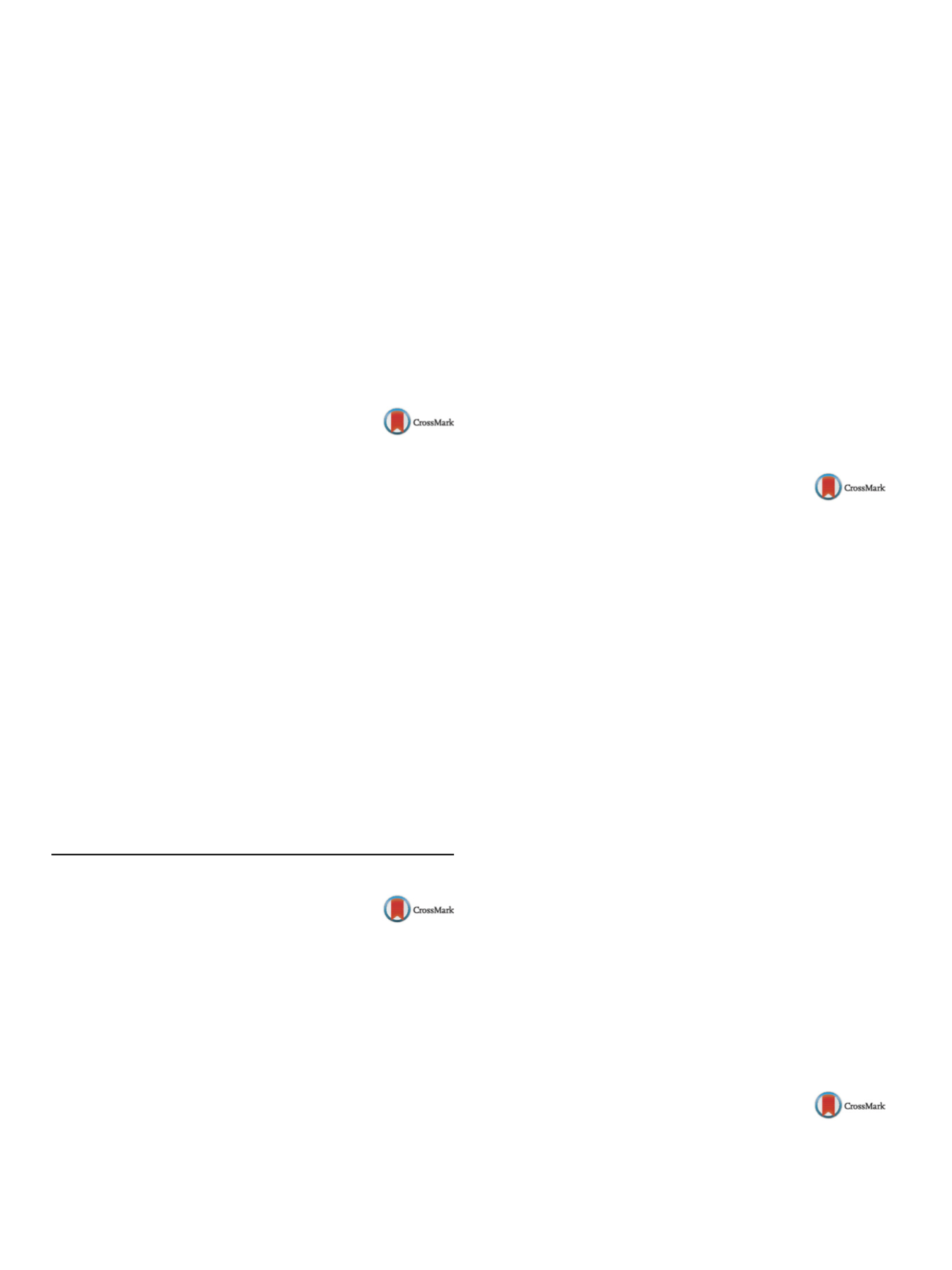

S24
25th European Congress of Psychiatry / European Psychiatry 41S (2017) S8–S52
briefly reviewed including cross-cultural considerations and devel-
opmental psychology studies on these emotions. Yet this keynote
focuses in the phenomenology and epistemology of guilt and shame
as complex emotions. This includes considering that guilt is experi-
enced in twomoments (decompressed into amoment of negligence
and another of guilt) while shame only in one moment (prolonged
in a “frozen now”). All the inputs have suggested an operational-
ization of epistemic and phenomenic differences considering their
context, formal object, particular object and action tendency. Lastly
it refers to the relation of these experiences with psychopathology
and nosology concerning their adaptive and maladaptive nature,
their relation with empathy as well as their presence in several
disorders such as anxious, depressive and obsessive compulsive
sorts.
Disclosure of interest
The author has not supplied his declaration
of competing interest.
http://dx.doi.org/10.1016/j.eurpsy.2017.01.127S054
Shame and guilt inducing drugs
G. DiPetta
Neuropsychiatrist- addiction center consultant, department of
mental health, Naples, Italy
The Author in this presentation examines the role of two com-
plex human experiences, the Guilt and the Shame, in the field of
the substances addiction. The population of abuser can be divided
between users of sedatives and users of stimulants. Sedative drugs
and stimulant drug belong to two different way of being-in-the-
world. Sedative drugs are able to medicate the internal pain, which
is constitutive of the guilt. Stimulant drugs are able to medicate
the dysphoria, which is constitutive of the shame. In the realm of
psychopathology Tellenbach with the concept of premelancholic
personality in the guilty man and Kohut with the concept of narcis-
sism in the tragicman have put the bases for a different typification.
In both cases, the common final result, from a psychopathological
point of view, is a severe crisis of the temporalization.
Disclosure of interest
The author has not supplied his declaration
of competing interest.
http://dx.doi.org/10.1016/j.eurpsy.2017.01.128Symposium: Challenges in Europe: refugees and
asylum seeker patients in mental health
S055
Suicidal behaviour among asylum
seekers in the Netherlands;
prevalence, background and
prevention
C.J. Laban
GGZDrenthe, De Evenaar- North Netherlands centre for transcultural
psychiatry, Beilen/Leeuwarden, The Netherlands
Background
Problems of asylum seekers are multiple and com-
plex. Having experienced pre migration adversities, they face
multiple post-migration living problems in the host country. In clin-
ical practice suicidal ideations and suicidal behavior often occurs.
Objectives/aims
To increase knowledge and give directions for
preventive measures related to suicidal behavior among asylum
seekers.
Method
Literature, related to the subject, is summarized.
Results
In this presentation the context of the receptionof asylum
seekers is explained. Data will be shown on suicides and suicidal
attempts among asylum seekers, in comparison with the Dutch
population and with international data. Moreover an overview
of qualitative and quantitative research findings will be shown
on the many risk factors asylum seekers experience: traumatic
experiences, loss, mental health problems, poor living conditions,
fear to be expelled, uncertain future and post migration living
problems. Attention will be given to the situation of imprisoned
undocumentedmigrants in The Netherlands. Hobfolls theory of the
Conservation of Resources will be used to explain the increased
risk for suicidal behavior and suicide among asylum seekers and
undocumented migrants. Prevention strategies contain coopera-
tion to decrease the risk factors, enhance the protective factors,
early detection of signals, and good access to mental health care.
Conclusion
Asylum seekers encounter many risk factors for sui-
cidal behavior and suicide. The impossibility to get control over
their lives and the lack of resources of resilience needs to be rec-
ognized as important risk factors. There is a need for cooperation
between all professionals and volunteers to change this situation.
Disclosure of interest
The author has not supplied his declaration
of competing interest.
http://dx.doi.org/10.1016/j.eurpsy.2017.01.129S056
How to deal with growing racism and
discrimination against refugees and
asylum seekers in Europe?
L. Küey
Associate professor of psychiatry world, psychiatric association,
Istanbul, Turkey
The growing number of refugees and asylum seekers pouring in
Europe due to wars and armed conflicts constitute a great chal-
lenge for psychiatry and the mental health field. This challenge also
includes the growing racism and discrimination against refugees
and asylum seekers. Discrimination could be defined as the atti-
tudes and behavior based on the group differences. Any group
acknowledged and proclaimed as ‘the other’ by prevailing
zeit-
geist
and dominant social powers, and further dehumanized may
become the subject of discrimination. In a spectrum from dis-
like and micro-aggression to overt violence towards the other,
it exists almost in all societies in varying degrees and forms; all
forms involving some practices of exclusion and rejection. Hence,
almost all the same specific human physical and psychosocial char-
acteristics that constitute the bases for in-group identities and
reference systems could also become the foundations of discrim-
ination towards the humans identified as out-groups. Added to
this, othering, rising from imagined and generalized differences
and used to distinguish groups of people as separate from the norm
reinforces and maintains discrimination.
Albeit the widespread exercise of discrimination against refugees
and asylum seekers, peoples and mental health professionals also
have a long history of aiming and practicing more inclusive ways
of solving conflicts of interests between in-groups and out-groups.
This presentation will mainly focus on the psychosocial aspects of
the anti-discriminative efforts and search an agenda for the Euro-
pean Psychiatry in this regard.
Disclosure of interest
The author has not supplied his declaration
of competing interest.
http://dx.doi.org/10.1016/j.eurpsy.2017.01.130S057
Action plan of the WPA: Action plan
which follows the objectives of the
association relating to refugees and
asylum seekers
D. Bhugra
Institute of psychiatry, psychology & Ne, London, United Kingdom


















